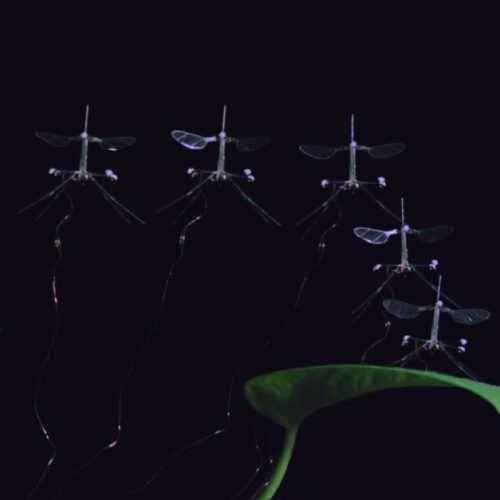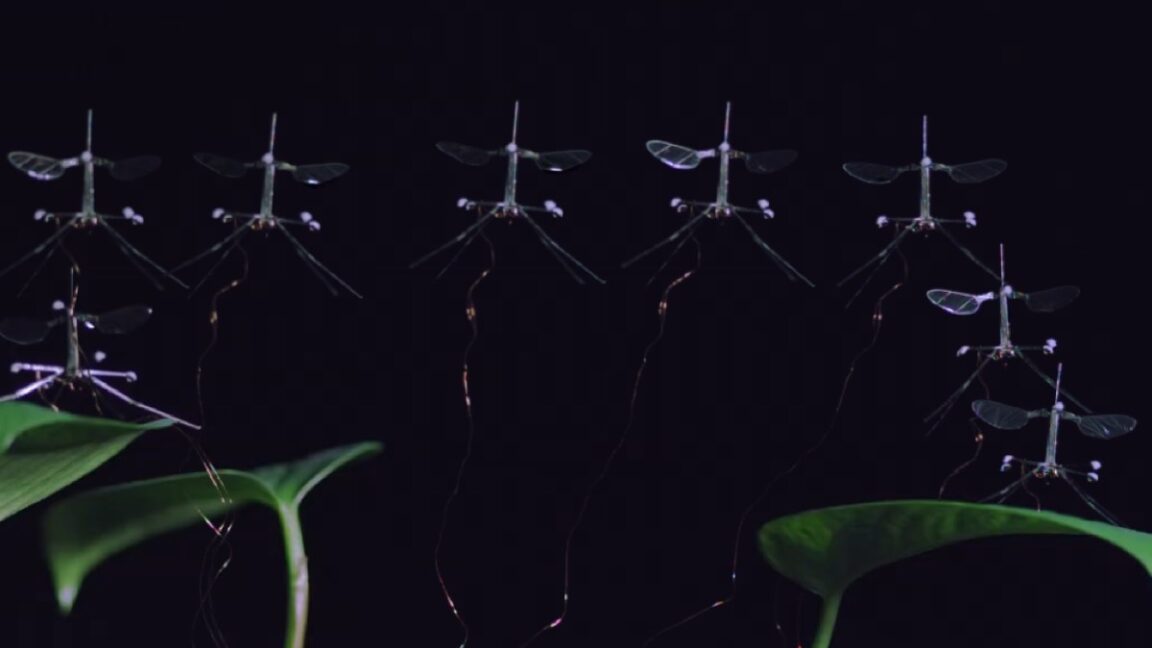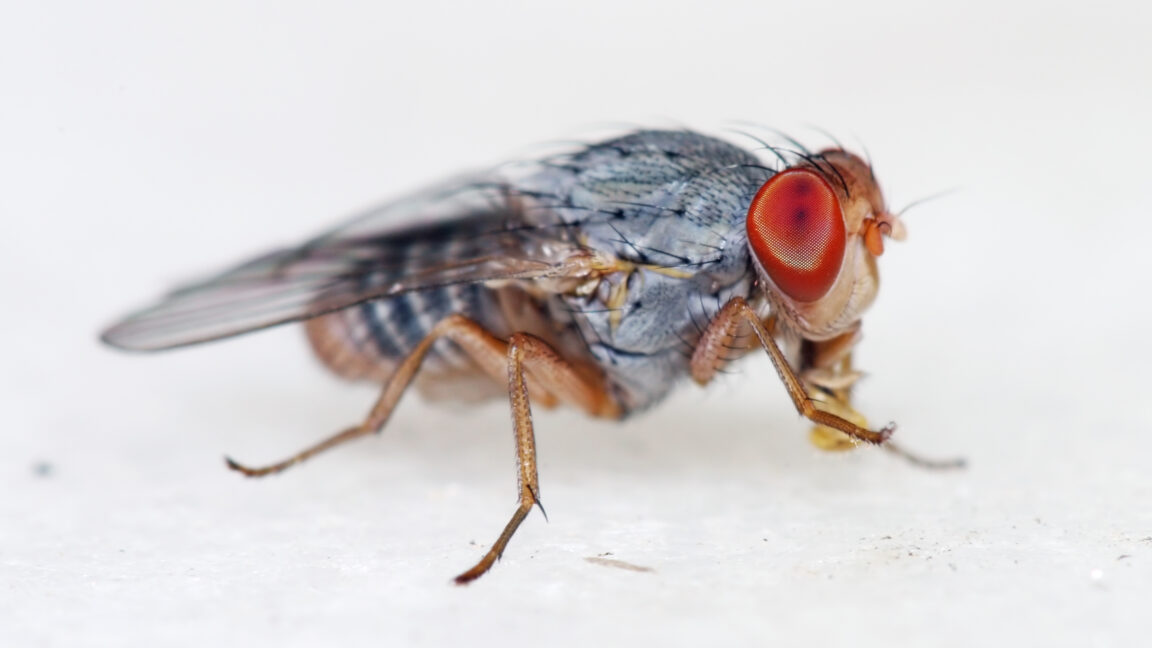Reading view
RoboBee sticks the landing
Several years ago, Harvard University roboticist Robert Wood made headlines when his lab constructed RoboBee, a tiny robot capable of partially untethered flight. Over the years, RoboBee has learned to fly, dive, and hover. The latest improvement: RoboBee has learned how to stick the landing, thanks to biomechanical improvements to its landing gear modeled on the crane fly, which has a similar wingspan and body size to the RoboBee platform. The details of this achievement appear in a new paper published in the journal Science Robotics.
As previously reported, the ultimate goal of the RoboBee initiative is to build a swarm of tiny interconnected robots capable of sustained, untethered flight—a significant technological challenge, given the insect-sized scale, which changes the various forces at play. In 2019, Wood's group announced its achievement of the lightest insect-scale robot so far to have achieved sustained, untethered flight—an improved version called the RoboBee X-Wing. In 2021, Wood's group turned its attention to the biomechanics of the mantis shrimp's knock-out punch and built a tiny robot to mimic that movement.
But RoboBee was not forgotten, with the team focusing this time around on achieving more robust landings. “Previously, if we were to go in for a landing, we’d turn off the vehicle a little bit above the ground and just drop it, and pray that it will land upright and safely,” said co-author Christian Chan, one of Wood's graduate students. The trick is to minimize velocity when approaching a surface and then quickly dissipating impact energy. Even something as small and light as RoboBee can generate significant impact energy. The crane fly has long, jointed appendages that enable them to dampen their landings, so the insect served as a useful model for RoboBee's new landing gear.


© Harvard Microrobotics Laboratory
Fruit flies can be made to act like miniature robots
Even the tiniest of living things are capable of some amazing forms of locomotion, and some come with highly sophisticated sensor suites and manage to source their energy from the environment. Attempts to approach this sort of flexibility with robotics have taken two forms. One involves making tiny robots modeled on animal behavior. The other involves converting a living creature into a robot. So far, either approach has involved giving up a lot. You're either only implementing a few of life's features in the robot or shutting off most of life's features when taking over an insect.
But a team of researchers at Harvard has recognized that there are some behaviors that are so instinctual that it's possible to induce animals to act as if they were robotic. Or mostly robotic, at least—the fruit flies the researchers used would occasionally go their own way, despite strong inducements to stay with the program.
Smell the light
The first bit of behavior involved Drosophila's response to moving visual stimuli. If placed in an area where the fly would see a visual pattern that rotates from left to right, the fly will turn to the right in an attempt to keep the pattern stable. This allowed a projector system to "steer" the flies as they walked across an enclosure (despite their names, fruit flies tend to spend a lot of their time walking). By rotating the pattern back and forth, the researchers could steer the flies between two locations in the enclosure with about 94 percent accuracy.


© arlindo71
We got an exclusive look at the pitch deck that landed this AI robotics startup $20.6 million in funding
Rajat Bhageria
- Chef Robotics just raised a $20.6 million Series A led by Avataar Venture Partners.
- The startup builds AI robots that make food in an assembly line.
- BI got an exclusive look at the pitch deck Chef used to raise its funding round.
AI is ushering in a new era of robotics, and one startup just raised a big funding round to bring spatially intelligent robots to food companies.
The startup, Chef Robotics, raised a $20.6 million Series A funding round led by Avataar Venture Partners. Construct Capital, Bloomberg Beta, Promus Ventures, MFV Partners, Interwoven, HCVC, Alumni Ventures, MaC Venture Capital, Red and Blue Ventures, Tau Partners, Siddhi Capital, and BOLD Capital Partners also participated in the round.
Founded in 2019, Chef is a robotics company that uses AI-powered robots to make and package food in processing plants. While a traditional factory machine can be programmed to automate some repetitive steps, like portioning a serving or placing a lid, Chef's AI robots can reason with their surroundings, make adjustments, and complete additional tasks while working next to humans.
"Our customers have a ton of ingredients," Chef founder and CEO Rajat Bhageria told Business Insider. He added that the company is focused on using generative AI techniques to "onboard" new ingredients into the robots' intelligence.
"The more ingredients we can manipulate, the more utilization the robots have, and thus the more value we can create for our customers."
Customers include Amy's Kitchen, meal delivery kit company Sunbasket, and frozen Indian food company Chef Bombay.
The food industry is facing a critical labor shortage, according to the US Chamber of Commerce, thanks to a combination of low wages, high risk, and unpleasant conditions in factories and processing plants. By supplementing the food workforce with capable, autonomous robots, Bhageria's bet is that companies will have more business options at a lower price point.
To that point, Chef, as part of its funding round, announced it received $22.5 million in equipment financing from Silicon Valley Bank, which will be used to continue building out the company's hardware. Chef robots are currently deployed at plants in North America and have manipulated nearly 2,000 ingredients and produced more than 44 million food servings.
"I think the world and especially investors have really awoken to the power of AI in robotics," Bhageria said. "The reality is that 90% of GDP is in the physical world, and investors are seeing how much of an impact GenAI can have on robotics and thus the labor market."
Many investors are excited to back spatially intelligent robots, and there are a handful operating in the food and manufacturing space. Botrista, which mixes specialty beverages like iced tea and lemonade, raised a $65 million Series C last year from Jollibee Foods.
And Figure AI, which is similarly working to address the labor shortage by bringing spatially intelligent robots to unsafe jobs across manufacturing and logistics, raised a massive $675 Series B funding round from Microsoft and Bezos Expeditions last year.
Here's an exclusive look at the 12-slide pitch deck Chef Robotics used to raise its Series A funding round.
Chef
Chef
Chef
Chef
Chef
Chef
Chef
Chef
Chef
Chef
Chef
Chef